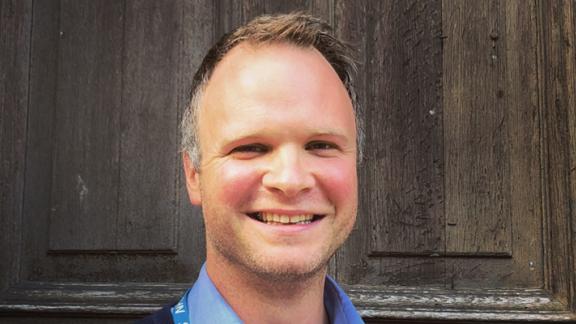Getting a head start on population health management

Using patient data to understand and model potential health outcomes has never been more important than it is now, says Jessica Hicks, principal analytics consultant at NHS Arden & Gem CSU.
Population health management (PHM) has been seen for some time as having the potential to significantly change how we deliver health services, moving towards a much more personalised approach to caring for our patients. But the COVID-19 pandemic has turned what had largely been an opportunity for the health service to enhance preventative medicine, into headline news for the general public. Alongside the incredible efforts of frontline NHS staff caring for those with COVID-19 are the scientists, mathematicians and data analysts working around the clock to understand more about this new virus and how we can combat it.
But outside of this immediate pressure, PHM has an enduring role to play in helping us understand our patients’ needs, identifying those most at risk from disease or those most likely to benefit from new interventions. Ultimately, PHM allows us to provide more effective personalised care within stretched resources. The wealth of health and social care data available is the key to unlocking this approach but understanding how best to do that remains a challenge.
There have been pockets of success popping up across the country. The recent report published by NHS Clinical Commissioners (NHSCC), Advancing Population Health Management, highlights a number of case studies where PHM is having a positive impact. The rapid response required during the pandemic is also enabling solutions to traditional data sharing barriers to be found more quickly. But as we emerge from the current crisis, it will be important for us to retain the progress we have made in working together across the NHS and beyond to fully harness the potential of PHM.
A national approach
Health systems will soon have access to a segmented view of their population via the National Performance and Population Health Dashboard, giving everyone a consistent starting point for understanding population need. At Arden & GEM, we have been working with Outcomes Based Healthcare and NHS England and NHS Improvement to produce a dashboard based on the Bridges to Health population segmentation approach, which will be freely available to health systems across England. Using national data sources – including A&E, inpatient, outpatient, mental health and community data – the dashboard will provide the basis for targeted healthcare planning. It will also enable NHS England to baseline the NHS Long Term Plan and identify suitable metrics to measure the impact of interventions on specific patient cohorts such as those with a long-term condition or those receiving palliative care. This data is also being used to help areas understand and target vulnerable cohorts during the COVID-19 crisis.
This dashboard was partly designed to provide systems with a foundation for PHM. It will show those not yet engaging in PHM that this approach is possible and will provide a set of tools to help their system understand how to assess and segment their patient population beyond more established, but crude, groupings such as disease, age or ethnicity. The national tool will enable health systems to gain a much clearer understanding of their local priorities, the impact of multi-morbidities on service utilisation and how disease prevalence may differ between deprived and less deprived areas.
However, the national tool is just a starting point. Commissioners and providers will be able to drill down to primary care network – PCN – (neighbourhood) level but there is not currently any primary care data included and the information will be aggregated. To progress beyond simply understanding their populations to implementing interventions, systems need to be able to reidentify their patient cohorts and add local primary care data. During COVID-19, one of our roles has been to provide a link between national and primary care data, to help GP practices identify and contact vulnerable patients, but in future, more comprehensive data linkages within local areas will facilitate more individualised care.
Evidencing interventions
While it’s easy to focus on the data and what it tells us, the real value comes from the interventions we’re able to put in place as a result. Instead of grouping patients by condition and treating those conditions in isolation, with PHM we’re able to home in on specific cohorts and tackle health inequalities simply by using data to improve our understanding of their needs. A good illustration of this is the ‘Improving diabetes care for people in West Berkshire’ case study in the NHSCC report, where PHM has been used to identify and support two specific diabetes cohorts with tailored approaches to providing information and access to care.
Prior to the pandemic, some areas had started to invest in developing their own segmentation tools which they can continue to use and develop to identify priorities and plan interventions at system-wide, CCG or PCN level. For example, Norfolk PCNs have commissioned a model, adapted from the British Columbia Health System Matrix specification, which combines data from over 470,000 local records including mental health, acute and community data flows. Using this model, commissioners have the tools and evidence needed to prioritise the most effective interventions for specific segments and to improve patient outcomes. They have already been able to use the tool to build a robust case for new social prescribing and digital self-care tools for patients at risk of developing mental health difficulties, as well as identifying the most beneficial locations for new maternity hubs and enhanced mental health services.
PHM is still in its infancy, and as the NHSCC report highlights, challenges such as information governance and data sharing, particularly with local authorities and other non-NHS bodies, are ongoing. But in the face of the unprecedented coronavirus challenge, progress is being made at speed so that those most vulnerable can be protected and NHS resources can be managed. With the rapid learning prompted by this pandemic, combined with the roll out of the National Performance and Population Health Dashboard, and shared learning from existing PHM case studies, there is more to come from population health.
Jessica Hicks, Principal Analytics Consultant, NHS Arden & GEM CSU. Follow the organisation on Twitter @ardengem



